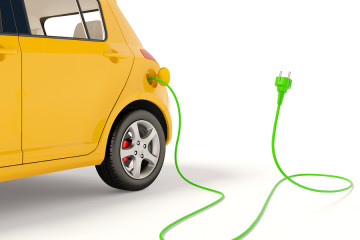Tesla Has an Oracle But Investors Must Consider Delphi: Gadfly

(Bloomberg Gadfly) —David Einhorn says Tesla Inc.’s valuation is a bubble. But then, you hardly need to pay a hedge-fund manager to know that.
Tesla’s stock fell slightly in after-hours trading following the release of first-quarter results late Wednesday. Even so, its overall valuation is still on the sunny side of $50 billion, so it remains bigger than General Motors Co. by market cap (though not by cars sold, revenue, profits, cash flow … you get the idea).
As I’ve noted before, Tesla’s earnings have little bearing on what the stock does. That is largely a function of belief in the visionary powers of its CEO Elon Musk.
That isn’t to deny Tesla’s successes to date. Indeed, another announcement from autos-land earlier on Wednesday shows just how successful it’s been — though not necessarily in a way that rewards Tesla’s shareholders.
For them, heroic levels of extrapolation from Tesla’s earlier wins are required in order to support a 2018 price/earnings multiple of 303 times. This is especially the case when you consider Tesla missed the consensus estimate for the first quarter by 63 percent — and that’s after the consensus estimate did this over the past year:
Still, fundamentals are fundamentals. And the really fundamental thing with Tesla is cash. That is presumably why it boasted that it ended March with more cash on hand than any quarter before — $4 billion, in fact.
It will certainly need it.
Amount of Cash Tesla Burned In Its Latest Quarter
$623 Million After CapEx
For one thing, cash talks to only one side of the balance sheet; Tesla’s net recourse debt actually increased in the first quarter by $269 million. The amount of cash burned in the quarter, $623 million after capital expenditure, was less than in the last three months of 2016. But it was still the company’s second-biggest quarterly cash burn ever. And, it should be noted, it effectively swallowed up half the $1.22 billion Tesla raised via selling more shares and convertible bonds in March.
You ain’t seen nothing yet, though. Tesla’s latest guidance is for flat sales, lower gross margin and higher interest costs in the current quarter. Meanwhile, it expects to invest roughly $1.5 billion between now and July, when it says the hotly anticipated Model 3 will launch.
Add it up and the second quarter will almost certainly be Tesla’s first ever where it burns through north of $1 billion.
The second half is harder to guess, in part because Tesla itself is vague on how many vehicles it expects to deliver. It is interesting to note, however, that Tesla went out of its way to clarify the Model 3 is not an upgrade to the existing Model S luxury sedan. This, combined with deliveries that have been running flat, sequentially, since the third quarter of 2016, suggests demand for existing models is slowing, perhaps as a result of drivers waiting to see the next one. Free cash flow will likely remain negative through the rest of the year.
But don’t forget the power of that $50 billion market cap.
Think of it this way. To date, Tesla has raised $3.9 billion from seven equity sales since 2010, according to data compiled by Bloomberg. At its current price, it could raise more than that by selling new stock equating to just 8 percent of its current shares outstanding.
Might investors balk at such a slug of equity hitting at once? Possibly, but they’ve been remarkably tolerant of dilution so far. And there’s always the likes of Tencent Holdings Ltd. out there to play the role of strategic investor, as it did earlier this year. On that front, the question from Morgan Stanley analyst Adam Jonas on Wednesday evening’s call about Apple Inc. — which has a few spare dollars lying around — potentially being a partner for Tesla was notable.
So until the bubble bursts, Tesla can and almost certainly will keep burning through cash and topping up when it needs to. If you’re a believer, then you’re just fine with that.
If not, then you should consider that other announcement I mentioned: namely, Delphi Automotive PLC’s decision to spin off its powertrain business. This division serves the established automotive industry producing vehicles powered by the internal combustion engine. The larger, remaining business will focus on electrification, sensors and software.
In other words, Delphi, a company originally spun out of GM, is now letting go of the old technology so it can focus on its faster-growing business.
It doesn’t take a hedge-fund manager to work out that Delphi has been looking at Tesla’s soaring valuation and hopes the split will inject some exuberance into its own stock — which jumped by 11 percent on Wednesday.
For those who believe in Musk’s vision but not Tesla’s valuation, they may want to consider the fact that Delphi’s business focused on electrification and autonomy makes $12 billion of revenue and actually turns an operating profit.
It also, crucially, serves the entire automotive industry’s efforts to reinvent vehicles, not just Tesla. That may actually be Delphi’s biggest attraction: It can actually capitalize on the competition for the 21st-century vehicle that Musk has helped to get going. Tesla, meanwhile, must deal with the rising challenge.
This column does not necessarily reflect the opinion of Bloomberg LP and its owners.





No Comment